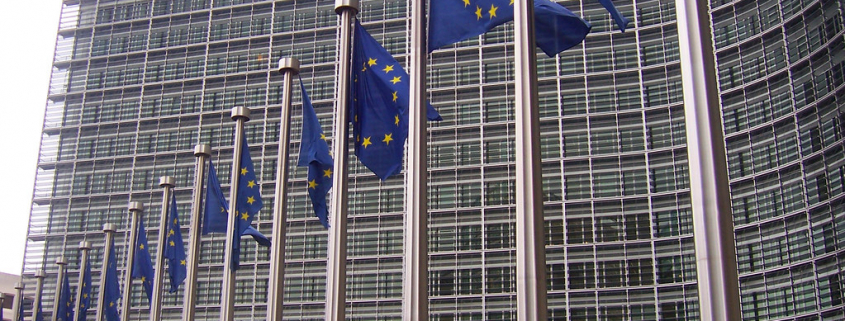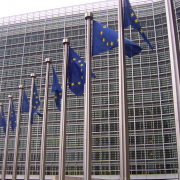COMMISSION IMPLEMENTING REGULATION (EU) 2023/515
of 8 March 2023
renewing the approval of the active substance abamectin in accordance with Regulation (EC) No 1107/2009 of the European Parliament and of the Council, and amending Commission Implementing Regulation (EU) No 540/2011
(Text with EEA relevance)
THE EUROPEAN COMMISSION,
Having regard to the Treaty on the Functioning of the European Union,
Having regard to Regulation (EC) No 1107/2009 of the European Parliament and of the Council of 21 October 2009 concerning the placing of plant protection products on the market and repealing Council Directives 79/117/EEC and 91/414/EEC (1), and in particular Article 20(1) thereof,
Whereas:
|
(1) |
Commission Directive 2008/107/EC (2) included abamectin as an active substance in Annex I to Council Directive 91/414/EEC (3). |
|
(2) |
Active substances included in Annex I to Directive 91/414/EEC are deemed to have been approved under Regulation (EC) No 1107/2009 and are listed in Part A of the Annex to Commission Implementing Regulation (EU) No 540/2011 (4). |
|
(3) |
The approval of the active substance abamectin, as set out in Part A of the Annex to Implementing Regulation (EU) No 540/2011, expires on 30 April 2023. |
|
(4) |
An application for the renewal of the approval of the active substance abamectin was submitted to Austria, the rapporteur Member State, and Malta, the co-rapporteur Member State, in accordance with Article 1 of Commission Implementing Regulation (EU) No 844/2012 (5) within the time period provided for in that Article. |
|
(5) |
The applicant submitted the supplementary dossiers to the rapporteur Member State, the co-rapporteur Member State, the Commission and the European Food Safety Authority (‘the Authority’) in accordance with Article 6 of Implementing Regulation (EU) No 844/2012. The application was found to be complete by the rapporteur Member State. |
|
(6) |
The rapporteur Member State prepared a draft renewal assessment report in consultation with the co-rapporteur Member State and submitted it to the Authority and the Commission on 17 April 2019. In its draft renewal assessment report, the rapporteur Member State proposed to renew the approval of abamectin. |
|
(7) |
The Authority communicated the draft renewal assessment report to the applicant and to the Member States for comments and forwarded the comments received to the Commission. The Authority also made the supplementary summary dossier available to the public. |
|
(8) |
On 15 July 2020, the Authority communicated to the Commission its conclusion (6) on whether abamectin can be expected to meet the approval criteria provided for in Article 4 of Regulation (EC) No 1107/2009. The Authority identified a number of issues that could not be finalised. In particular it identified risks as regards birds and mammals, aquatic organisms and soil macroorganisms. |
|
(9) |
On 1 February 2022, the Commission sent a mandate to the Authority with a request to review the exposure and risk assessments as regards birds and mammals, aquatic organisms and soil macroorganisms. The Authority sent to the Commission an updated conclusion on 27 July 2022 (7). In its updated Conclusion, the Authority confirmed the risks identified in the previous assessment. |
|
(10) |
The Commission presented a renewal report and the draft Regulation for abamectin to the Standing Committee on Plants, Animals, Food and Feed, on 25 March 2021 and revised versions of the two documents on 8 December 2022 to take into account the outcomes in the updated Conclusion of the Authority. |
|
(11) |
The Commission invited the applicant to submit its comments on the conclusion of the Authority and, in accordance with Article 14(1), third subparagraph, of Implementing Regulation (EU) No 844/2012, on the renewal report. The applicant submitted its comments on both versions of the renewal report, which have been carefully examined. |
|
(12) |
It has been established with respect to one or more representative uses of at least one plant protection product containing abamectin that the approval criteria provided for in Article 4 of Regulation (EC) No 1107/2009 are satisfied. |
|
(13) |
The risk assessment for the renewal of the approval of the active substance abamectin is based on representative uses as insecticide and acaricide in protected crops. While it is not necessary, in the light of this risk assessment, to maintain the restriction to use only as insecticide and acaricide, it is necessary to provide, in accordance with Article 14(1) of Regulation (EC) No 1107/2009 in conjunction with Article 6 thereof and in the light of current scientific and technical knowledge, for certain conditions and restrictions. It is, in particular, appropriate to restrict the use of plant protection products containing abamectin to uses which allow controlled exchange of material and energy with the surroundings, so as to prevent the release of plant protection products into the environment and mitigate the high risk identified to aquatic organisms and wild terrestrial non-target organisms. Accordingly, uses in permanent greenhouses may be authorised. |
|
(14) |
Implementing Regulation (EU) No 540/2011 should therefore be amended accordingly. |
|
(15) |
Commission Implementing Regulation (EU) 2022/378 (8) extended the approval period of abamectin to 30 April 2023 in order to allow the renewal process to be completed before the expiry of the approval period of that active substance. Given that a decision on renewal has been taken ahead of that extended expiry date, and taking into account that the current approval of abamectin expires on 30 April 2023, this Regulation should enter into force as soon as possible and apply earlier then that date. |
|
(16) |
The measures provided for in this Regulation are in accordance with the opinion of the Standing Committee on Plants, Animals, Food and Feed, |
HAS ADOPTED THIS REGULATION:
Article 1
Renewal of the approval of the active substance
The approval of the active substance abamectin, as specified in Annex I, is renewed subject to the conditions laid down in that Annex.
Article 2
Amendments to Implementing Regulation (EU) No 540/2011
The Annex to Implementing Regulation (EU) No 540/2011 is amended in accordance with Annex II to this Regulation.
Article 3
Entry into force and date of application
This Regulation shall enter into force on the third day following that of its publication in the Official Journal of the European Union.
It shall apply from 1 April 2023.
This Regulation shall be binding in its entirety and directly applicable in all Member States.
Done at Brussels, 8 March 2023.
For the Commission
The President
Ursula VON DER LEYEN
(1) OJ L 309, 24.11.2009, p. 1.
(2) Commission Directive 2008/107/EC of 25 November 2008 amending Council Directive 91/414/EEC to include abamectin, epoxiconazole, fenpropimorph, fenpyroximate and tralkoxydim as active substances (OJ L 316, 26.11.2008, p. 4).
(3) Council Directive 91/414/EEC of 15 July 1991 concerning the placing of plant protection products on the market (OJ L 230, 19.8.1991, p. 1).
(4) Commission Implementing Regulation (EU) No 540/2011 of 25 May 2011 implementing Regulation (EC) No 1107/2009 of the European Parliament and of the Council as regards the list of approved active substances (OJ L 153, 11.6.2011, p. 1).
(5) Commission Implementing Regulation (EU) No 844/2012 of 18 September 2012 setting out the provisions necessary for the implementation of the renewal procedure for active substances, as provided for in Regulation (EC) No 1107/2009 of the European Parliament and of the Council concerning the placing of plant protection products on the market (OJ L 252, 19.9.2012, p. 26).
(6) EFSA Journal 2020;18(8):6227. Available online: www.efsa.europa.eu.
(7) EFSA Journal 2022;20(8):7544. Available online: www.efsa.europa.eu.
(8) Commission Implementing Regulation (EU) 2022/378 of 4 March 2022 amending Implementing Regulation (EU) No 540/2011 as regards the extension of the approval periods of the active substances abamectin, Bacillus subtilis (Cohn 1872) strain QST 713, Bacillus thuringiensis subsp. Aizawai strains ABTS-1857 and GC-91, Bacillus thuringiensis subsp. Israeliensis (serotype H-14) strain AM65-52, Bacillus thuringiensis subsp. Kurstaki strains ABTS 351, PB 54, SA 11, SA12 and EG 2348, Beauveria bassiana strains ATCC 74040 and GHA, clodinafop, Cydia pomonella Granulovirus (CpGV), cyprodinil, dichlorprop-P, fenpyroximate, fosetyl, malathion, mepanipyrim, metconazole, metrafenone, pirimicarb, Pseudomonas chlororaphis strain MA342, pyrimethanil, Pythium oligandrum M1, rimsulfuron, spinosad, Trichoderma asperellum (formerly T. harzianum) strains ICC012, T25 and TV1, Trichoderma atroviride (formerly T. harzianum) strain T11, Trichoderma gamsii (formerly T. viride) strain ICC080, Trichoderma harzianum strains T-22 and ITEM 908, triclopyr, trinexapac, triticonazole and ziram (OJ L 72, 7.3.2022, p. 2).
ANNEX I
|
Common Name, Identification Numbers |
IUPAC Name |
Purity (1) |
Date of approval |
Expiration of approval |
Specific provisions |
||||
|
Abamectin CAS No 71751-41-2 Avermectin B1a CAS No 65195-55-3 Avermectin B1b CAS No 65195-56-4 Abamectin CIPAC No 495 |
Avermectin B1a (10E,14E,16E)-(1R,4S,5′S,6S,6′R,8R,12S,13S,20R,21R,24S)-6′-[(S)-sec-butyl]-21,24-dihydroxy-5′,11,13,22-tetramethyl-2-oxo-(3,7,19-trioxatetracyclo[15.6.1.14,8.020,24]pentacosa-10,14,16,22-tetraene)-6-spiro-2′-(5′,6′-dihydro-2′H-pyran)-12-yl 2,6-dideoxy-4-O-(2,6-dideoxy-3-O-methyl-α-L-arabino-hexopyranosyl)-3-O-methyl-α-L-arabino-hexopyranoside Avermectin B1b (10E,14E,16E)-(1R,4S,5′S,6S,6′R,8R,12S,13S,20R,21R,24S)-21,24-dihydroxy-6′-isopropyl-5′,11,13,22-tetramethyl-2-oxo-(3,7,19-trioxatetracyclo[15.6.1.14,8.020,24]pentacosa-10,14,16,22-tetraene)-6-spiro-2′-(5′,6′-dihydro-2′H-pyran)-12-yl 2,6-dideoxy-4-O-(2,6-dideoxy-3-O-methyl-α-L-arabino-hexopyranosyl)-3-O-methyl-α-L-arabino-hexopyranoside |
≥ 850 g/kg abamectin (sum of avermectin B1a and avermectin B1b), min. 800 g/kg avermectin B1a and max. 200 g/kg avermectin B1b |
1 April 2023 |
31 March 2038 |
Only uses which allow controlled exchange of material and energy with the surroundings and prevent release of plant protection products into the environment may be authorised, in particular uses in permanent greenhouses. For the implementation of the uniform principles, as referred to in Article 29(6) of Regulation (EC) No 1107/2009, the conclusions of the renewal report on Abamectin, and in particular Appendices I and II thereto, shall be taken into account. In this overall assessment Member States shall pay particular attention to:
|
(1) Further details on the identity and the specification of the active substance are provided in the renewal report.
ANNEX II
The Annex to Implementing Regulation (EU) No 540/2011 is amended as follows:
|
(1) |
in Part A, entry 210 on Abamectin is deleted; |
|
(2) |
in Part B, the following entry is added:
|
(1) Further details on the identity and the specification of the active substance are provided in the renewal report.
Source: EU Pesticide database
Image Source: “Banderas Europeas en el Berlaymont (Bruselas)” by Amio Cajander. is marked with CC BY-SA 2.0.




